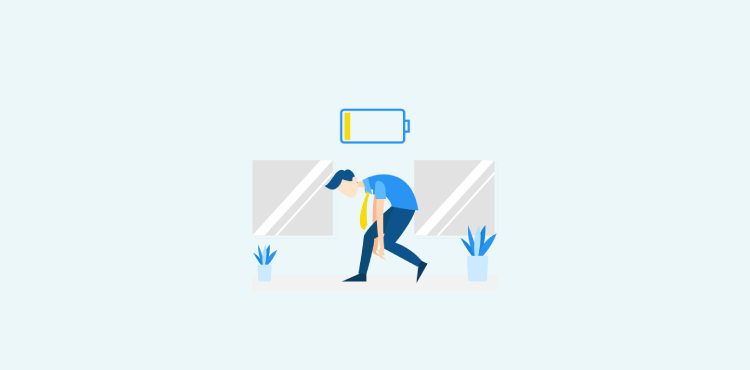One of the best ways to provide your staff with clarity and accountability, is to write a great position description that is well understood, and can be regularly reviewed.
Position descriptions are often pigeonholed into an HR department folder and filed away. Undermined as a checkbox task, position descriptions are highly under-utilised. However, if position descriptions are written well and engaged with, they have the opportunity to empower your staff by giving them clear direction.
Ultimately, time taken to communicate internal roles allows your staff to understand the position they hold in the overarching company strategy. By feeling like a real part of this strategy, employees are motivated to grow and succeed with it. Employee role descriptions set expectations for staff and easily allow management to recognise achievement as well as under-performance.
If you consider, for example, a large project. Before any work starts expectations are set and staff are delegated. Positions in the project are understood, discussed and implemented to achieve goals more efficiently. If you change the context to the modern workplace, how are they any different? Employees need position descriptions and companies need staff who know what they’re doing.
Here’s how to write a great position description…
Position Title
When starting to write a great position description, begin with the position title. It makes complete sense that a position description would always start with a position title. However not all titles are created equal. A job title needs to accurately reflect the role and responsibilities of the individual. Ultimately, a position title needs to articulate where an employee stands in the overall company hierarchy.
While this may seem like the easiest step, a position title sets the tone for the rest of the description. It’s very important to get right and easy to get wrong; so here’s some advice.
- If it goes over two lines on a business card, it’s too long;
- Position titles should fit normal industry terms to be comparable;
- Ensure that position titles are honest and truly reflect the employee’s responsibility level.
Position Statement
After the position title comes a position statement. This statement is a further iteration of the staff member’s title. It summarises the purpose of the position and how this employee fits in with the rest of the working environment and business goals.
Perhaps a more fluid way of understanding this statement is approaching it from the perspective of an elevator pitch. If you were to explain what you did for work to a stranger in a few sentences, this would be your position statement. It would be a summation of your major responsibilities, goals and fit in the business – who you report to or work under.

Responsibilities
Managing individual employee responsibilities is a mountain of a task, and one that can only be accomplished successfully through understanding and reiteration. When you write a great position description, outlining particular job responsibilities is a tangible way for both managers and employees to understand what it is they ‘do’.
One of the best ways to accomplish a mutual understanding is to not over complicate. A widely known navy proverb exists to this effect – keep it simple, stupid. Instead of writing paragraphs of role duties aim to succinctly list them in short statements. Around five is the ideal number.
Much like managing, understanding and delegating employee responsibilities is a big task, but by breaking information into digestible pieces, managers and employees are able to work confidently.
See our related post: 10 Ways to Improve your Employee Induction Process.
Role expectations
As well as responsibilities, role expectations need to be understood. Your staff are now aware of their title, responsibilities and fit in the grand scheme of the business. Role expectations however, are different in that they articulate tangible tasks the role requires.
As an example, while graphic designers are responsible for ensuring all projects are kept on time and budget, an expectation of such may be to design and maintain a website. Expectations differ from responsibilities because they are literal and measurable duties.
Role requirements
Role requirements are integral to keeping your staff good at what they do. When constructing role requirements it’s necessary to examine the level of skill demanded by the role – what are these skills?
If we again consider the graphic designer, their role requirements would be a consideration of the competence needed to complete their responsibilities and expectations. In this case, a role requirement could be proficiency in the Adobe Creative suite.
Establishing role requirements when you write a great position description not only provides your employees with skill expectations but allows management to benchmark. Through bench marking, management is able to see which staff are excelling and who is lagging behind. With solid role requirements in place, staff are also able to reflect on where their skills sit in the company hierarchy, set goals for advancement and maintain relevance.
“People who have role clarity are much more likely to be engaged with the work they’re doing and with their organisation, and we know that high levels of employee engagement drive better business results.”
– Michael Sleap (HR consultant)
Clarify how the position fits in with the company structure
Once the candidate knows about their responsibilities, they need to know how their position fits in with the company. If there are people whose role feeds into theirs, include this in the description. Likewise, let them know where their work will directly feed into.
In today’s world, people are looking for meaning in their work. They don’t want to be just another cog in the system. A great job description can help them clearly see their contribution to the overarching company goals.
Include information about the company
A job description is a recruitment aid and once it is great, it will get you closer to recruiting the right employees.
Job descriptions are a lot of times focused on the candidate; what they should be able to do and what they need to be. But if you want it to attract the right candidates, share information about the company. Include information like the company’s values, the mission, and why the company is the way that it is.
To make sure you attract people who are a cultural fit, go deeper and share about your culture, charities you support and what it may feel like to work at the company. You can always provide a link to your website for candidates to find out more.
Sell the perks of working at the company
Similar to sharing about the culture, to attract the right candidates and increase chances of pairing your employees with the right colleagues, sell the perks of the company.
These can include benefits of working at the company, the environment they will work in, for instance, is it an outdoors office, the type of flexibility offered and what accommodations are made for a work life balance.
The job description is the first step to showing candidates what their life at the company may look like. If done right, it can attract the right talent.
Get input from past job holders
No one knows about a job like someone who has done it before. HR should get input from employees who have had this role when they write job descriptions. While management knows what is required, a past position holder will be able to give more meaningful details about what the day to day of the position is like.
During this conversation, management may find that there are parts about the job and the description that need to change.
Show the candidate what they stand to gain
In addition to letting the employee know what they will be doing, great descriptions let them know what they will gain from the company. You might include that employees will have a chance to work one on one with industry experts, that they will gain expertise in a given field or that they will contribute to improving the welfare of a certain community.
In the long run, a job description such as this will inform peer reviews, manager reviews and performance reviews, all of which are beneficial to the entire team.
Review the description
A job description shouldn’t be a static document. It is very possible that during the course of work new responsibilities may be added or some may be removed. New clients may be onboarded requiring an employee to take on new roles or requiring them to have new skills.
The work environment might also change, requiring people to work remotely or from home. As the job description serves as a document that teams can look at for guidance, it should be updated and edited to reflect the changes in the job.
How a great position description helps management and other employees
Now that we have discussed how to write a position description, let us explore how it helps different people in an organisation. We already know that it helps employees (the job holders) in clarifying what they need to do and serving as an accountability tool. This is how it serves management.
It works as a guide
A great position description works as a guide to help people achieve their goals. With clear role expectations, people will know what they need to do and how they contribute to the greater organisational objectives. This is essential for management because people produce better results when they know what to do. Unclear goals have been cited as one of the biggest stressors in the workplace.
A good review tool
A great job description shows exactly what is expected of the employee. Those that are crafted well will use examples to clarify what success looks like. For instance one for a sales representative may say; having signed up 300 new eligible users by the first quarter.
Both the manager and employee will be able to review performance guided by the job description. If remuneration is tied to performance then a job description such as this can double as a remuneration tool.
A good basis for training plans
Just as it can be used to review performance, a job description can help in designing training plans. Management will be able to note gaps in performance delivery and propose trainings to help employees improve.
Helps to reduce redundancies
At the point of writing the position descriptions, management will be able to spot redundancies in the roles. They can then make a decision to eliminate certain tasks or to replace them with ones which will bring more value to the company.
How a great position description helps other employees
It can aid in collaboration
A great position description can aid in collaboration. It is important for employees to know their roles, but in a team setting, it is also important for them to know what their teammates’ roles are. This will help them to know where they can come in on jobs and how to better work together to achieve goals.
Reduce duplication of work
If someone is meant to do a particular task, the position description will make that clear. You will have reduced instances of duplication. This will reduce wastage of time and other resources.
In Summary
Position descriptions are commonly undermined in the workplace, which is a detrimental mistake considering how advantageous they prove to be to everyone. Taking the time to collaborate with your employees to write a great position description gives everyone in your team clarity.
Outlining position titles, responsibilities, expectations and role requirements, provides your staff with accountability. Ultimately, employees who are accountable for their work do a better job.



